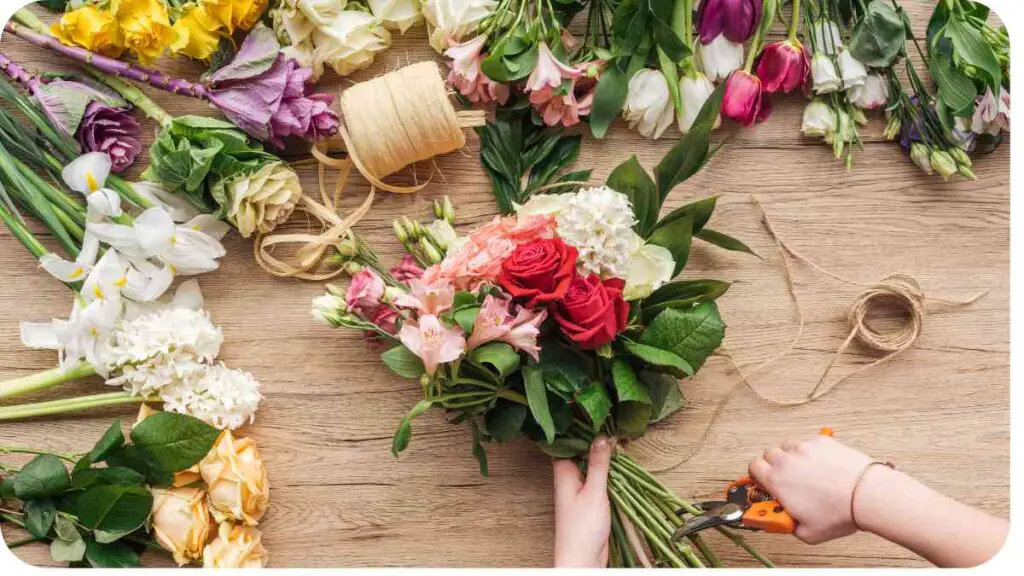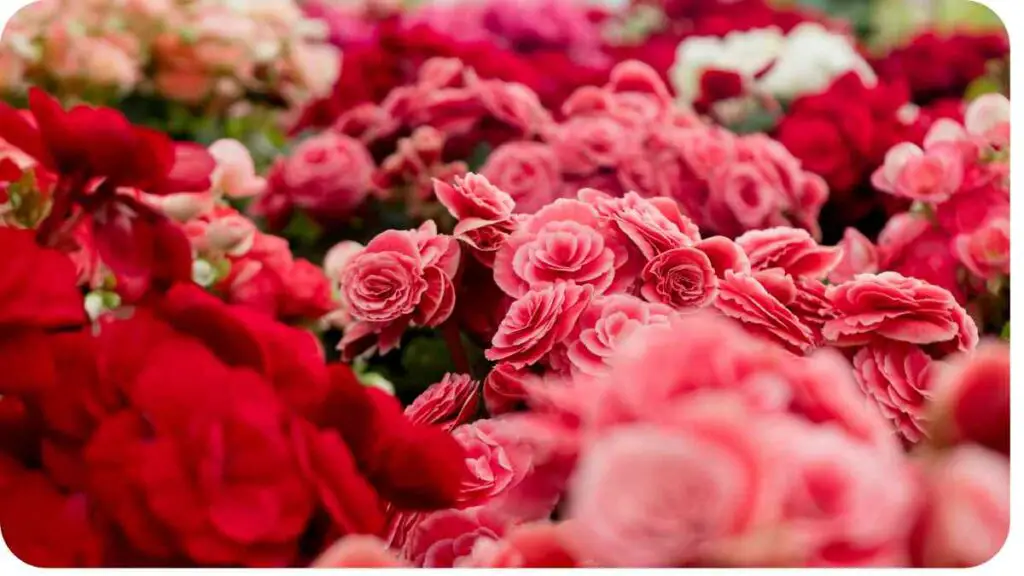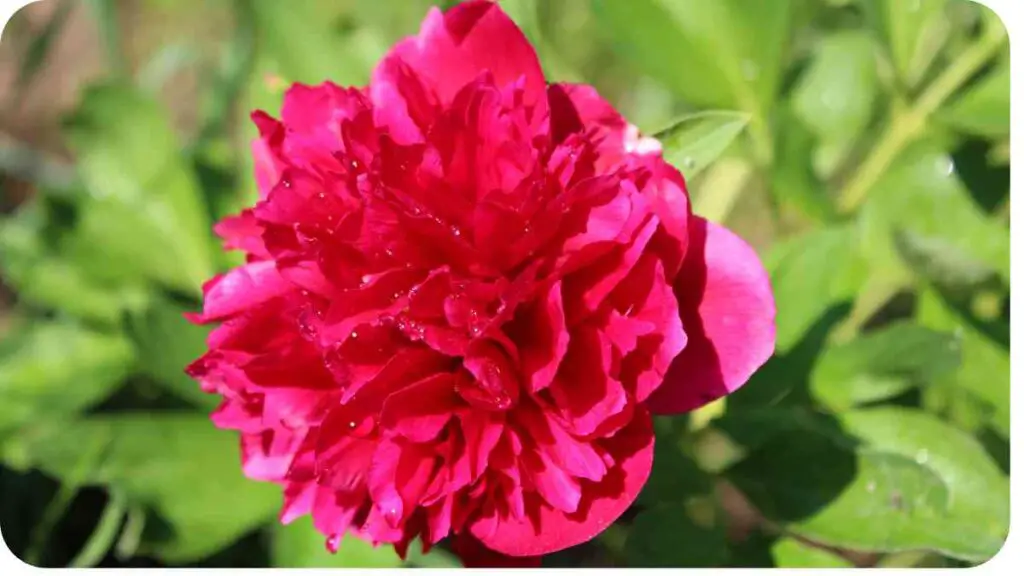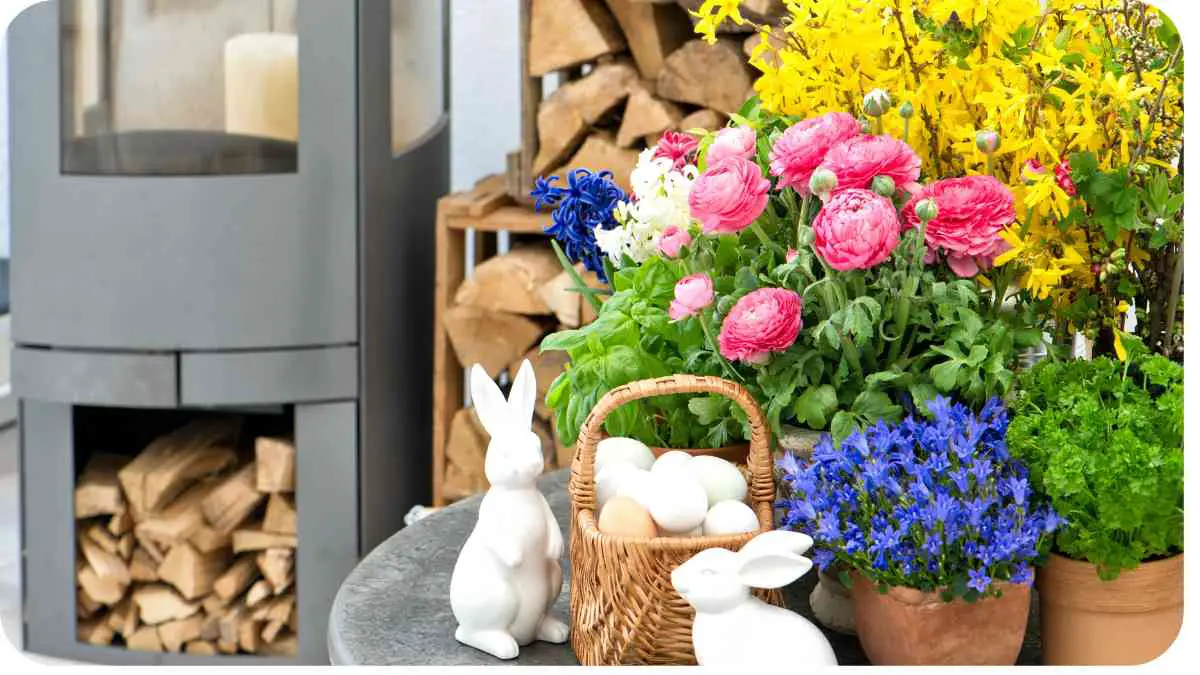Flowers are nature’s delicate wonders, enchanting us with their vibrant colors, alluring fragrances, and unique forms. Among the diverse array of floral varieties, some stand out for their impressive height and majestic presence.
In this article, we delve into the world of flowers that grow on stalks, celebrating these towering blooms that add vertical interest and drama to gardens, landscapes, and floral arrangements.
| Takeaways |
|---|
| 1. Flowers that grow on stalks add vertical interest and drama to gardens and floral arrangements. |
| 2. Proper care, including soil preparation, watering, and pruning, is essential for maintaining the health and vitality of tall blooms. |
| 3. Companion planting with suitable perennials, grasses, and annuals can enhance the beauty and ecological value of flowers that grow on stalks. |
| 4. Creative uses of tall flowers include floral arrangements, landscape design, and indoor decor, providing endless opportunities for expression and enjoyment. |
| 5. Embracing sustainable gardening practices such as water conservation, organic pest control, and native plant selection promotes environmental stewardship and long-term garden health. |
2. What are Flowers that Grow on Stalks?

Flowers that grow on stalks, also known as tall or towering blooms, are characterized by their long, sturdy stems that elevate the blossoms above the foliage. Unlike sprawling or ground-hugging flowers, these vertical specimens command attention with their lofty stature, making them ideal focal points in garden beds and floral displays.
Embrace the majesty of towering blooms with our guide to celebrating nature’s towering blooms and discover the beauty of flowers reaching new heights.
Table 1: Examples of Flowers that Grow on Stalks
| Flower Species | Height Range (inches) | Bloom Color | Preferred Growing Conditions |
|---|---|---|---|
| Delphinium | 36-72 | Blue, Purple, Pink | Full Sun, Well-Drained Soil |
| Foxglove | 24-60 | Pink, Purple, White | Partial Shade to Full Sun |
| Hollyhock | 48-96 | Various | Full Sun, Rich Soil |
| Lupine | 24-48 | Blue, Purple, Pink | Full Sun, Well-Drained Soil |
3. Benefits of Flowers that Grow on Stalks
Flowers that grow on stalks offer a multitude of benefits beyond their aesthetic appeal. Their towering presence creates visual interest and vertical dimension in gardens, adding depth and complexity to the landscape. Additionally, these tall blooms attract pollinators such as bees, butterflies, and hummingbirds, contributing to biodiversity and ecological balance.
Table 2: Benefits of Flowers that Grow on Stalks
| Benefits | Description |
|---|---|
| Vertical Interest | Elevates garden design, adds dimension and drama |
| Pollinator Attraction | Draws bees, butterflies, and hummingbirds, supporting ecosystem health |
| Space Optimization | Maximizes planting area by utilizing vertical space, ideal for small gardens and urban settings |
4. Popular Varieties of Flowers that Grow on Stalks

When it comes to flowers that grow on stalks, there is a diverse selection to choose from, each offering its own unique charm and beauty. Here are some popular varieties that are beloved by gardeners and floral enthusiasts alike:
Experience the enchantment of nature’s cascade with our collection of hanging plants and flowers. Let the vibrant colors and graceful tendrils transform your space into a botanical oasis.
Table 3: Popular Varieties of Flowers that Grow on Stalks
| Flower Species | Characteristics | Best Uses |
|---|---|---|
| Delphinium | Tall spires of densely packed flowers in shades of blue, purple, pink | Back of borders, cut flower arrangements |
| Foxglove | Bell-shaped blooms on slender stalks, often in shades of pink, purple, and white | Woodland gardens, cottage-style landscapes |
| Hollyhock | Showy flowers on towering stems, available in a range of colors including red, pink, yellow, and white | Cottage gardens, informal plantings |
| Lupine | Spikes of pea-like flowers in vibrant hues of blue, purple, pink, and white | Wildflower meadows, native plant gardens |
5. How to Care for Flowers that Grow on Stalks
While flowers that grow on stalks can make a stunning addition to any garden, they require proper care to thrive and flourish. Here are some essential tips for maintaining these majestic blooms:
Soil and Watering Needs
These tall flowers typically prefer well-drained soil to prevent waterlogging, which can lead to root rot. Amend heavy clay soils with organic matter such as compost to improve drainage. Water deeply and infrequently to encourage deep root growth and prevent moisture-related issues.
Sunlight Requirements
Most flowers that grow on stalks thrive in full sun, receiving at least 6 to 8 hours of direct sunlight per day. However, some species, such as foxgloves, tolerate partial shade. Ensure adequate sunlight exposure to promote robust growth and abundant flowering.
Pruning and Maintenance
Regular deadheading, or removing spent blooms, encourages continuous flowering and prevents self-seeding in some species. Additionally, stake tall stems if necessary to provide support and prevent them from bending or breaking in strong winds.
Table 4: Care Guide for Flowers that Grow on Stalks
| Care Aspect | Description |
|---|---|
| Soil and Watering | Well-drained soil, infrequent deep watering |
| Sunlight Requirements | Full sun to partial shade, depending on species |
| Pruning and Maintenance | Deadheading spent blooms, staking tall stems for support |
6. Companion Plants for Flowers that Grow on Stalks
Pairing flowers that grow on stalks with suitable companion plants can enhance their beauty and overall appeal while promoting a harmonious garden ecosystem. Here are some excellent companion plants to consider:
- Perennials: Pair tall flowers with low-growing perennials such as creeping phlox (Phlox subulata) or perennial geraniums (Geranium spp.) to create dynamic contrasts in height and form.
- Grasses: Ornamental grasses like feather reed grass (Calamagrostis × acutiflora) or fountain grass (Pennisetum spp.) provide texture and movement alongside towering blooms, creating a dynamic interplay of shapes and colors.
- Annuals: Annual flowers such as cosmos (Cosmos bipinnatus) or zinnias (Zinnia elegans) can fill in gaps between taller plants while adding a splash of vibrant color to the garden.
Create your own floral oasis with our expert tips on cutting flower garden plants. Delight in the beauty of freshly cut blooms adorning your home with timeless elegance.
Table 5: Companion Plants for Flowers that Grow on Stalks
| Companion Plant | Characteristics | Best Pairings |
|---|---|---|
| Creeping Phlox | Low-growing perennial with masses of small flowers | Delphinium, Hollyhock |
| Feather Reed Grass | Upright grass with narrow, arching foliage | Foxglove, Lupine |
| Cosmos | Bushy annual with daisy-like flowers | Hollyhock, Lupine |
| Zinnia | Colorful annual with single or double blooms | Delphinium, Foxglove |
7. Creative Uses of Flowers that Grow on Stalks

Beyond their traditional roles in garden beds and borders, flowers that grow on stalks offer endless creative possibilities for enhancing your outdoor and indoor spaces. Here are some imaginative ways to incorporate these towering blooms into your surroundings:
- Floral Arrangements: Use tall flowers as focal points in cut flower arrangements, pairing them with complementary foliage and filler flowers for stunning bouquets and centerpieces.
- Landscape Design: Integrate tall blooms into your landscape design to create vertical interest and draw the eye upward, adding drama and structure to garden beds, borders, and mixed plantings.
- Indoor Decor: Bring the beauty of towering blooms indoors by showcasing them in tall vases or decorative containers, adding a touch of natural elegance to your home decor.
Table 6: Creative Uses of Flowers that Grow on Stalks
| Creative Use | Description |
|---|---|
| Floral Arrangements | Focal points in bouquets, centerpieces, and floral installations, adding height and drama to arrangements |
| Landscape Design | Vertical elements in garden beds, borders, and mixed plantings, creating visual interest and structure in the landscape |
| Indoor Decor | Statement pieces in tall vases or decorative containers, bringing the beauty of the outdoors into your home |
8. Common Problems and Solutions
While flowers that grow on stalks are generally low-maintenance, they may encounter certain challenges that can impact their health and appearance. By being aware of common problems and implementing timely solutions, you can ensure the continued vitality and beauty of your towering blooms.
Pests and Diseases
Like all plants, flowers that grow on stalks are susceptible to attack by pests and diseases. Common pests include aphids, slugs, and snails, which may feed on foliage or flowers, causing damage or distortion. Diseases such as powdery mildew and botrytis can also affect these plants, particularly in humid or crowded conditions.
Solution: Monitor plants regularly for signs of pest infestation or disease symptoms, such as yellowing leaves, distorted growth, or fungal growth. Employ cultural control methods such as handpicking pests, improving air circulation, and practicing proper sanitation to minimize the risk of infestation. In severe cases, consider using targeted insecticides or fungicides as a last resort, following label instructions carefully to avoid harm to beneficial insects and the environment.
Create your own floral oasis with our expert tips on cutting flower garden plants. Delight in the beauty of freshly cut blooms adorning your home with timeless elegance.
Environmental Stress
Flowers that grow on stalks may experience stress due to environmental factors such as extreme temperatures, drought, or poor soil conditions. Prolonged exposure to intense sunlight or high temperatures can cause wilting, scorched foliage, or reduced flower production, while waterlogged or compacted soils can lead to root suffocation and decline.
Solution: Provide adequate protection from extreme weather conditions by providing shade during hot afternoons or using mulch to conserve soil moisture and regulate temperature. Ensure proper soil drainage by amending heavy soils with organic matter and avoiding overwatering. Water plants deeply and consistently during dry periods, allowing the soil to dry out slightly between waterings to prevent waterlogging and root rot.
Table 7: Common Problems and Solutions for Flowers that Grow on Stalks
| Problem | Symptoms | Solutions |
|---|---|---|
| Pests and Diseases | Damage to foliage or flowers, fungal growth, yellowing leaves | Monitor plants regularly, employ cultural control methods, use targeted insecticides or fungicides as needed |
| Environmental Stress | Wilting, scorched foliage, reduced flower production, root suffocation | Provide shade during extreme weather, improve soil drainage, water deeply and consistently, avoid overwatering |
9. Growing Flowers that Grow on Stalks: Tips for Success
Successfully cultivating flowers that grow on stalks requires careful attention to their specific needs and preferences. Whether you’re a novice gardener or an experienced enthusiast, these tips will help you achieve thriving, towering blooms in your garden:
- Select Suitable Varieties: Choose tall flower species and cultivars that are well-suited to your climate, soil type, and growing conditions. Research each plant’s requirements, including sunlight, water, and soil pH, to ensure compatibility with your garden environment.
- Provide Adequate Support: Tall flowers often require support to prevent them from bending or toppling over in windy conditions. Install stakes or trellises early in the growing season to provide structural support for tall stems, securing them gently with garden twine or soft ties.
- Practice Regular Maintenance: Keep tall flowers healthy and vigorous by practicing regular maintenance tasks such as deadheading spent blooms, removing diseased or damaged foliage, and monitoring for pest infestations. Prune back overgrown or leggy stems as needed to promote bushier growth and continuous flowering.
- Mulch and Fertilize Appropriately: Apply a layer of organic mulch around the base of tall flowers to conserve soil moisture, suppress weeds, and regulate soil temperature. Additionally, fertilize plants periodically with a balanced fertilizer to provide essential nutrients for robust growth and blooming.
Unlock your creativity and explore the art of floral design with our tips for unique floral arrangements. From unconventional pairings to innovative displays, elevate your floral decor to new heights of sophistication.
Table 8: Tips for Growing Flowers that Grow on Stalks
| Tip | Description |
|---|---|
| Select Suitable Varieties | Choose tall flower species and cultivars that are compatible with your garden’s climate and growing conditions |
| Provide Adequate Support | Install stakes or trellises to support tall stems and prevent them from bending or toppling over |
| Practice Regular Maintenance | Deadhead spent blooms, remove diseased foliage, and monitor for pests to keep tall flowers healthy and vigorous |
| Mulch and Fertilize Appropriately | Apply organic mulch to conserve moisture and fertilize plants periodically for optimal growth and blooming |
By following these tips and guidelines, you can cultivate flourishing flowers that grow on stalks and enjoy their majestic beauty throughout the growing season.
10. Sustainable Practices in Cultivating Flowers that Grow on Stalks
Incorporating sustainable practices into your gardening routine not only benefits the environment but also promotes the long-term health and resilience of your flowers that grow on stalks. By adopting eco-friendly methods and reducing your ecological footprint, you can cultivate beautiful blooms while minimizing negative impacts on the planet. Here are some sustainable practices to consider:
- Water Conservation: Practice water conservation techniques such as collecting rainwater in barrels or using drip irrigation systems to minimize water waste and ensure efficient watering of your plants. Additionally, choose drought-tolerant flower varieties that require less irrigation, reducing the overall water consumption in your garden.
- Organic Pest Control: Instead of relying on chemical pesticides, opt for natural and organic pest control methods to manage insect pests while minimizing harm to beneficial insects and wildlife. Introduce beneficial insects such as ladybugs and lacewings to control aphids and other pests, or use homemade remedies such as neem oil or insecticidal soap to deter unwanted insects.
- Soil Health: Prioritize soil health by incorporating organic matter such as compost or aged manure into your garden beds to improve soil structure, fertility, and moisture retention. Avoid the use of synthetic fertilizers and chemical soil amendments, which can disrupt soil microbiota and lead to nutrient imbalances.
- Native Plant Selection: Choose native plant species whenever possible, as they are well-adapted to local growing conditions and support native wildlife such as pollinators and beneficial insects. Native flowers that grow on stalks not only require fewer resources to thrive but also contribute to the conservation of native plant species and biodiversity.
Table 9: Sustainable Practices for Cultivating Flowers that Grow on Stalks
| Sustainable Practice | Description |
|---|---|
| Water Conservation | Collect rainwater, use drip irrigation, and choose drought-tolerant varieties to minimize water consumption |
| Organic Pest Control | Use natural remedies and beneficial insects to manage pests while minimizing harm to beneficial wildlife |
| Soil Health | Improve soil fertility and structure with organic matter and avoid synthetic fertilizers and chemical soil amendments |
| Native Plant Selection | Choose native plant species that are well-adapted to local growing conditions and support native wildlife |
By embracing sustainable gardening practices, you can cultivate a thriving garden of flowers that grow on stalks while reducing your environmental impact and promoting ecological sustainability.
11. Conclusion
Flowers that grow on stalks add a touch of elegance, drama, and vertical interest to any garden or landscape. From the majestic spires of delphiniums to the delicate bell-shaped blooms of foxgloves, these towering specimens captivate the imagination and inspire awe with their beauty and grace.
By understanding their unique characteristics, preferences, and care requirements, you can successfully cultivate these majestic blooms in your own garden, creating a captivating tapestry of color, texture, and form.
Further Reading
- When are Sunflowers in Season? A Guide to Enjoying Nature’s Golden Beauties: Explore the peak blooming seasons of sunflowers and discover tips for enjoying these iconic golden blooms throughout the year.
- Century Plant Flowers: Everything You Need to Know: Delve into the fascinating world of century plant flowers, including their unique characteristics, blooming habits, and cultivation tips.
- Flower Picks from the Garden: Discover a curated selection of beautiful flowers picked from the garden, along with insights into their significance and symbolism.
FAQs
When do sunflowers typically bloom?
Sunflowers typically bloom during the summer months, from late June to early August, depending on the specific variety and growing conditions.
How long do century plant flowers last?
Century plant flowers, also known as agave flowers, typically bloom once in their lifetime, after which the plant dies. The flowering period can last several weeks to several months, depending on the species.
Can I grow sunflowers in pots?
Yes, sunflowers can be grown in pots or containers, provided they have sufficient space, sunlight, and well-draining soil. Choose dwarf or compact varieties for smaller containers.
How often should I water century plant flowers?
Century plant flowers are drought-tolerant and require infrequent watering once established. Water deeply but sparingly, allowing the soil to dry out between waterings to prevent root rot.
Are the flowers mentioned in the article suitable for cut arrangements?
Yes, the flowers mentioned in the article, such as sunflowers, century plant flowers, and other garden picks, are suitable for cut flower arrangements and can add beauty and freshness to indoor spaces.

I am Hellen James, a landscape architect. For many years I have written about landscaping for various publications; however, recently decided to focus my writing on personal experience as a profession.

